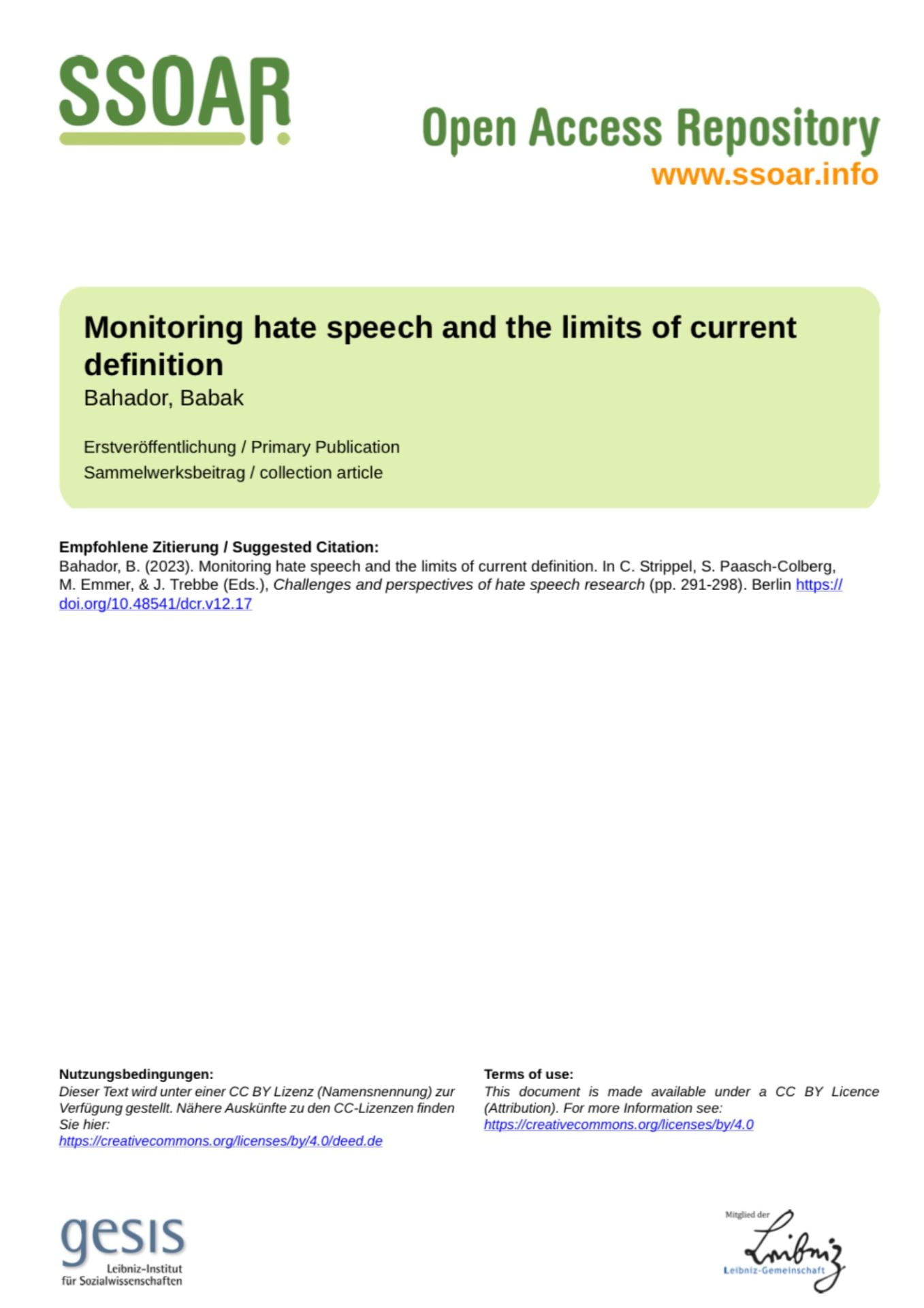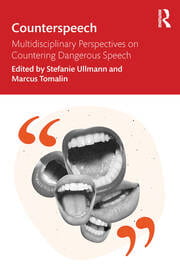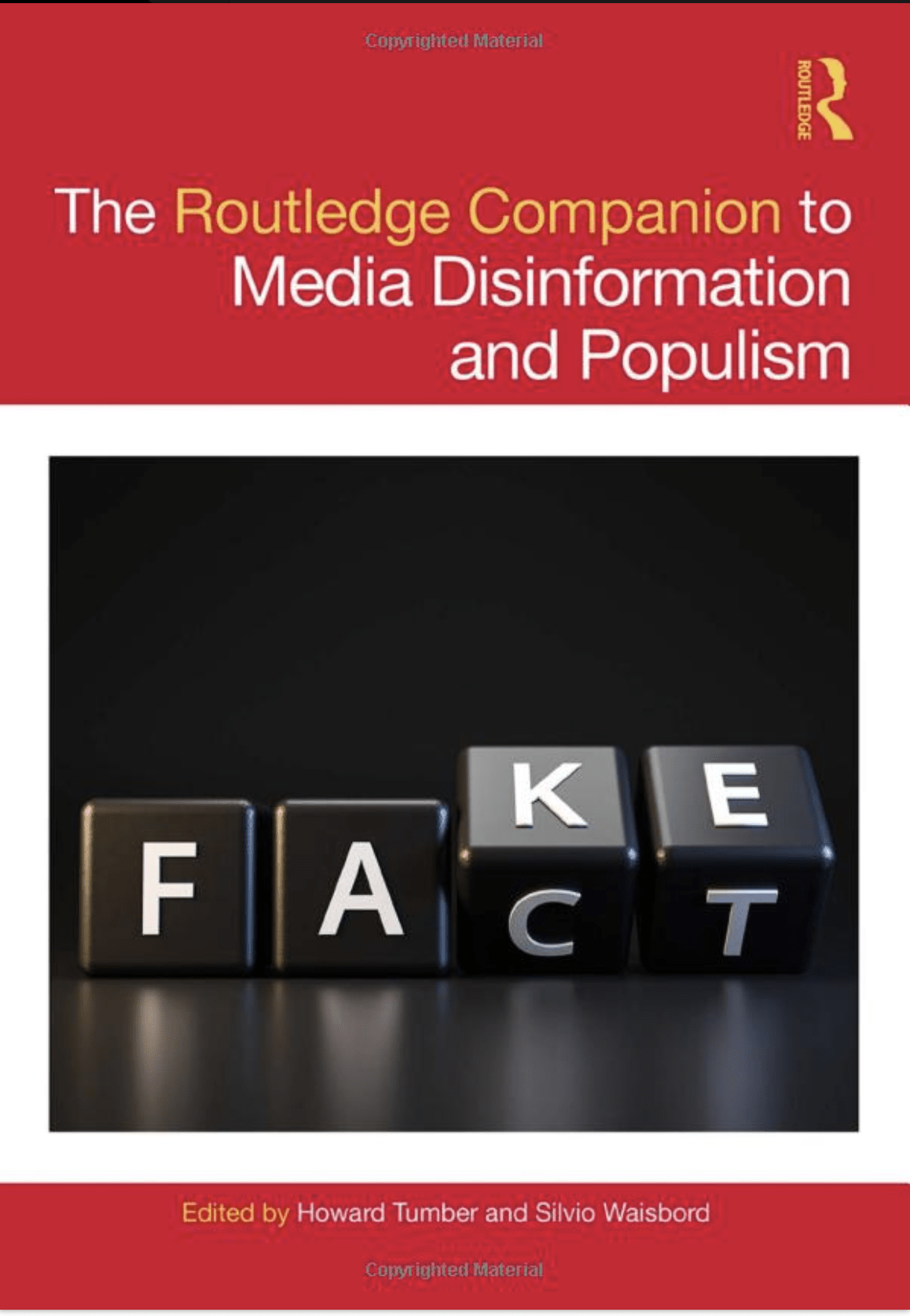2023
Current defnitions of hate speech are inadequate as the basis for monitoring hate speech targeted at groups. First, they do not capture escalating grouptargeted negative speech which can be a precursor to more extreme forms of hate speech such as dehumanization, demonization, and incitement to violence. While not hate speech, such negative speech is an early warning that could be helpful for a hate speech monitoring system to track, as responses and interventions, especially to the offine harms of hate speech, can take time to operationalize.
Second, current defnitions of hate speech do not capture hateful rhetoric aimed at groups not traditionally included in hate speech defnitions (those without immutable qualities), such as groups targeted for hate based on profession-based identity like journalists. This chapter presents some suggestions for addressing these issues, including a hate speech intensity scale.
2023
This chapter examines how counterspeech influences audiences, based on findings from the media effects and persuasion literature. Counterspeech, at its core, uses information to dissuade audiences away from using hate speech or being harmed by its effects. Separate audiences engage differently with hate speech and counterspeech. As such, this chapter bases its analysis on four distinct audiences – hate groups, violent extremists, the vulnerable, and the public (or bystanders). It examines five unique “effects” in relation to these audiences when counterspeech is used. The first involves “reframing”, which typically uses empathy to rehumanize groups targeted for hate. The second uses “cognitive dissonance”, which refers to discomfort hateful speakers face when counterspeech messaging highlights their logical inconsistencies. The third is the “spiral of silence”, which describes the pressure on hateful speakers to disengage due to the fear of online social isolation as counterspeakers change online norms and eliminate environments supportive of hate. The fourth effect is termed “two-step flow” and describes the process of using credible sources to influence audiences. Finally, “herding” refers to the influence counterspeech can have when anti-hate messaging dominates the online narrative and influences vulnerable audiences to adopt the popular position due to its dominance.
April 2021
Babak Bahador, addresses how to react to hate speech and fight the negative stereotypes seen online. TedxFoggyBottom
March 2021
Counterspeech refers to communication that responds to hate speech in order to reduce it and negate its harmful potential effects. This chapter defines hate speech and examines some of its negative impacts. In such scenarios, counterspeakers can play a calming role and try and prevent hateful rhetoric from turning into violence. This can involve countering hateful hashtags as they emerge following critical events or sending preventive ‘peace text’ messages promoting calm during key events or responding to false rumours. Before examining the concept of counterspeech more directly, it is important to understand that counterspeech is based on a set of assumptions. The chapter examines the audiences, goals, and tactics of counterspeech and then its messaging and effects. The importance of source credibility in persuasion is not unique to counterspeech and has been advocated as far back as at least Aristotle, who saw the credibility of the speaker to the audience as a central component of effective rhetoric.
November 2020
Hate speech does not operate in a vacuum, and its rise reflects changing political contexts. If we’re serious about fighting hate speech and its violent and destabilizing consequences, we need to identify its earliest manifestations. Babak Bahador offers a hate-speech intensity scale, a strategy that allows us to move beyond the binary approach that dominates current hate speech research. This concept can be operationalized to better identify and understand the evolutions of hate speech before it leads to real-world harms.
April 2019
Hate speech targeting minority groups is often associated with acts of political violence. One of the main disseminators of hate speech is the mass media, which continues to draw large audiences in Western states, but also act as a key source of content on social media. This working paper is based on a research project that aims to create awareness and accountability regarding hate speech by identifying the sources, targets and intensity of hate speech in leading US media political talk/news shows, focusing on the top 10 conservative and top 10 liberal shows by audience size across radio, cable news and YouTube. The study uses a keyword-based automated extraction method to identify potential cases of hate speech, which are then validated by human coders on a novel 6-point hate speech intensity scale.






